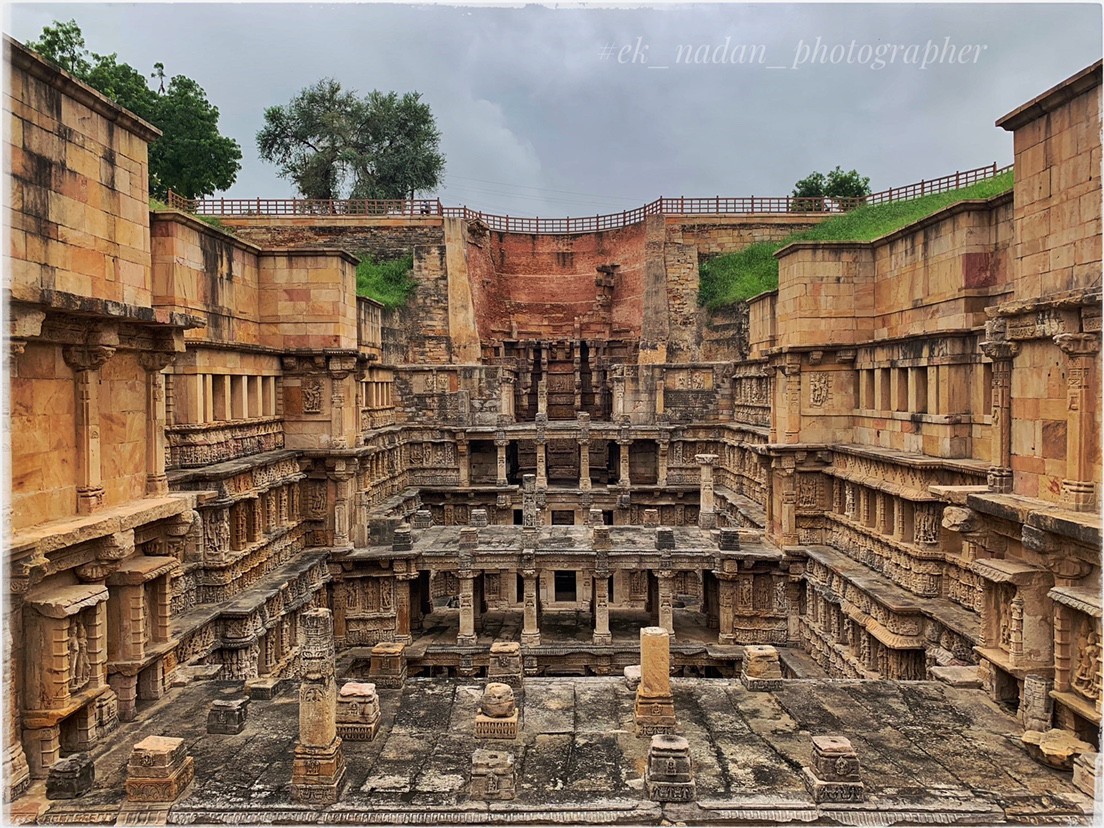
Photo credits:- ek_nadan_photographer
The etymology of stepwells includes forgotten civilisations in the form of exquisite artistry. Many of these were commissioned and built by queens and women in history.
When we think about the monuments built worldwide in memories of wives, mistresses or love interests, one unforgettable name is the Taj Mahal built by Shah Jahan in memory of his wife, Mumtaz.
But the list of ‘love’ monuments is endless with tragic stories such as that of Boldt Castle and Dobroyd Castle. Have we ever thought of sculptures made by women in memory of their husbands or love interests? If you look closely at the history of Western India’s stepwells – ancient water stores, also known as stepped well/staircases – you’ll find many of them were commissioned and patronised by women. The intriguing part is they were built in memory of their loved ones.
The etymology of stepwells includes forgotten civilisations in the form of exquisite artistry. In the Indian subcontinent, stepwells have been used since the Indus Valley civilisations about 5,000 years ago. Ancient Great Bath with stairs excavated at the Mohenjo Daro is the most famous example of the stepwells. Since they are more profound, these stepwells collect water during the seasonal monsoons and evaporate slowly. Historically, such water wells provided necessities such as drinking water for the semi-arid regions of India.
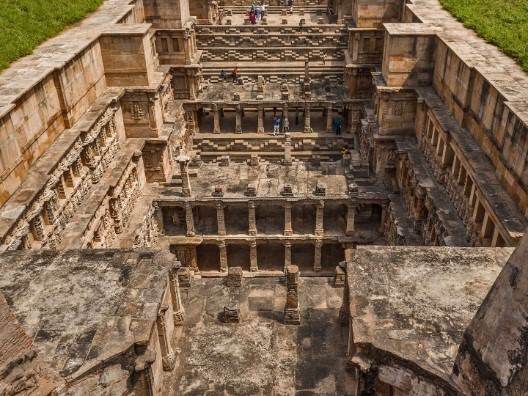
When we look at the history of stepwells built on the Western side of India, we find the patrons or inspirations of at least a quarter of Gujarat’s stepwells have been queens, mothers, daughters, mistresses, or goddesses.
“It is now also come to light that many of the stepwells were built by women – queens, wives of affluent traders, ordinary women and servant girls. Not only did women commission stepwells as patrons, but they also frequently served as an inspiration. Stepwells are often built in honour of a virtuous wife, a benevolent mother, a beloved mistress or a local goddess. The articulation and embellishment inside these structures are often expressive of this feminine character creating a delicate spatial filigree.” (Purnima Mehta Bhatt, Her Space Her Story).
Relation between stepwells and women
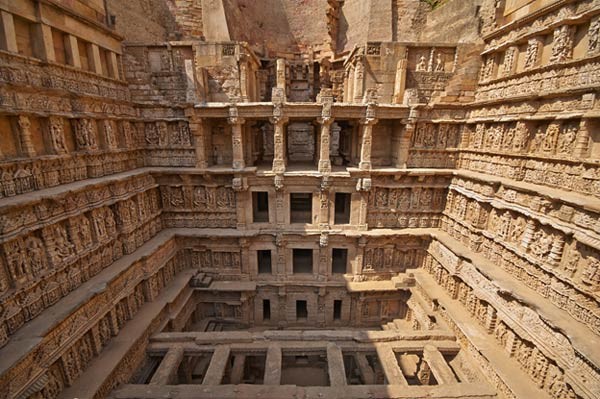
‘Water is female; they are the maternal, procreative aspect of the absolute’. (Zimmer, Myth and Symbols in Indian art and Civilisation)
It is not the first time that nature has been associated with feminine entities. Throughout history, the earth has been associated with muliebrity. Water is often equated with fertility and abundance in semi-arid landscapes, both literally and symbolically. In ancient times, giving water for public use was considered one of the most extraordinary acts of charity. Routines and rituals, however, linked women directly to the stepwell. In many villages of the region, fetching water, washing, and cleaning from wells are still everyday routines.
Historically, at the stepwells, women could socialise freely without being observed by men in the open spaces of village squares (chowk) or royal courts (darbar). It was a place where women would find solace in exchanging household stories, discussing politics, and seeking the company of other women.
Socially, they offered women a way to transition from the domestic sphere into the public domain when they were deprived of this opportunity for the most part. Furthermore, it sends the message that networking is essential for emotional support. With this brief window of freedom, the women could move away from their daily lives of constraints and oppression in a patriarchal society where they were treated as mere objects.
Folklore has it that in the Sabarkantha district of Gujarat, there is a stepwell known as Balasamudra; a woman unable to produce breast milk usually visits the well; a blouse or top is dipped in the water, after which when the cloth is worn, the magical qualities of the water will enable her to nurse her child successfully.
In many stepwells today, shrines have been constructed, or stepwells have been converted into temples. In Gujarati, the Mother Goddess referred to as ‘Maata’ in these shrines and temples is always worshipped as an incarnation. despite being recognised as a shrine it was acquitted of any kind of invasion by raiders. It’s still a religious place but in terms of secular ethos.
Morna Livingston of Thomas Jefferson University writes, “After a thousand years, the wells may be near the end of their natural lives, and their decay too far advanced to be checked, but in most cases, the attention to the goddess can hold off the ruin of a stepwell a while longer.”
Stepwell inscriptions provide valuable information related to stepwells, providing historians with insights into women donors who were otherwise obscure or overlooked in historical records of the time.
The practice of digging wells in remembrance of the dead was widely prevalent, corroborated by both epigraphic and oral traditions. Wells were built to honour a deceased relative. This act is referred to in Sanskrit text as ‘istapurta’ ( a pious work or sacrifice which confers merit).
Notable Stepwells
Rani ki Vav by Queen Udaymati
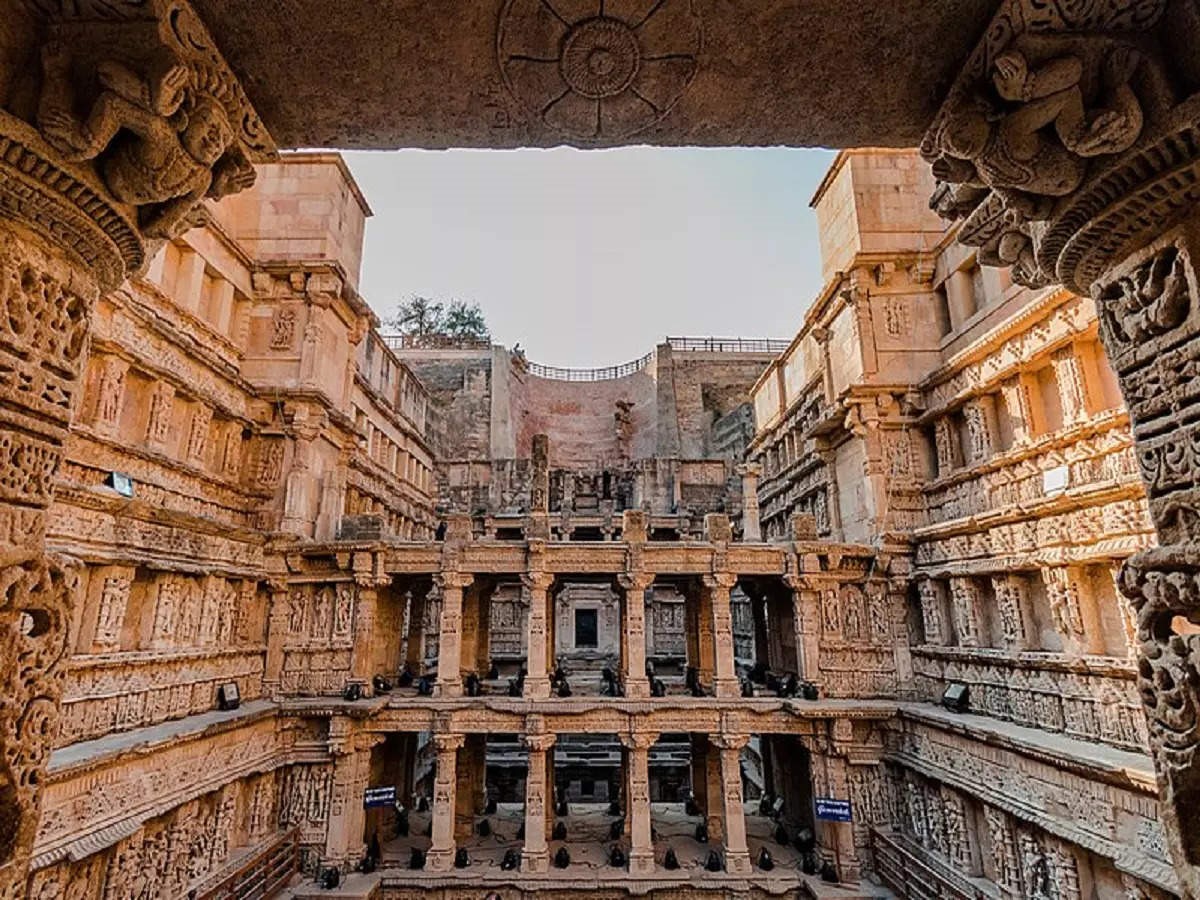
Known as the Rani ki Vav or Queen’s stepwell, the Patan monument placed on the list of World Heritage sites is a royal foundation, traditionally associated with Queen Udaymati, the widowed wife of Solanki ruler Bhimdeva 1 (1022-64). It was because it never served as a temple with outstanding treasury and had already fallen into disuse by the Muslim raiders that the Patan stepwell escaped detection.
Prabandh-Chintamani, composed by Jain Monk Mertunga in 1304, mentions that “the stepwell was commissioned in 1063 and was completed after 20 years”.
The stepwell was later flooded by the Saraswati river and silted over. Construction of the stepwell followed the Maru-Gurjara style, reflecting the mastery of this complex technique and the beauty of detail and proportion. The ornamentation of stepwell depicts the entire universe inhabited by gods and goddesses, nymphs, celestial beings; men and women; monks, priests and laity; animals, fishes and birds, including real and mythical ones; and plants and trees. Following the flooding of the Saraswati river, this stepwell was submerged for many years beneath the world.
After a long leap, the Archaeological Survey of India excavated and restored it in 1986. UNESCO designated it a World Heritage Site in 2014.
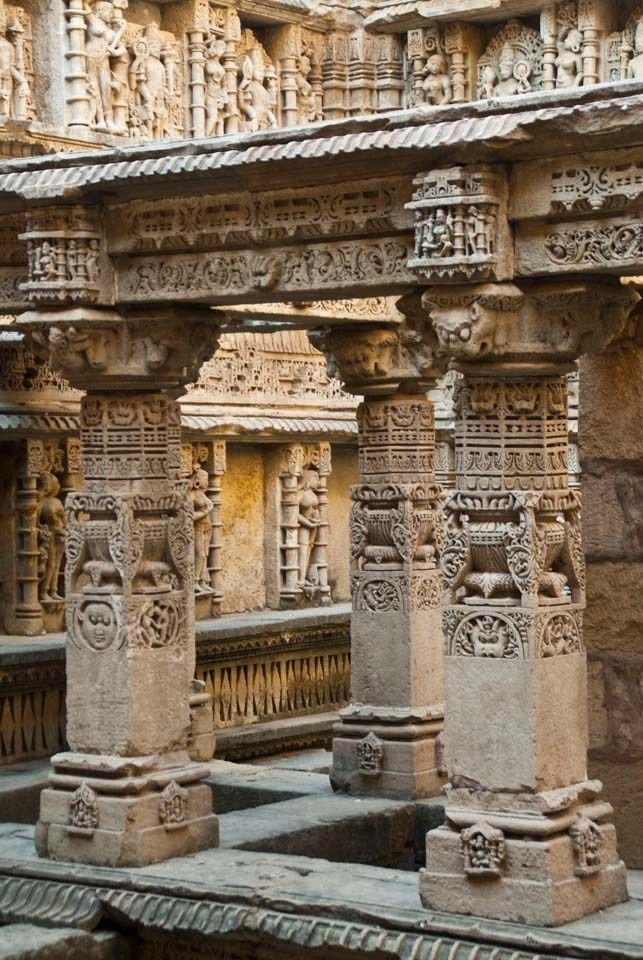
Adalaj stepwell, aka Rudabai stepwell, built in 1555 combining Hindu and Islamic elements is a unique waterwork. Platforms and galleries built into the stepwell’s side make it stand out from the rest.
Its story is of unrequited love and events centred around it. Rana Veer Singh, a Hindu leader of the Vaghela dynasty, ruled this region, known as Dandai Desh (located around 20 km from modern-day Ahmedabad) in the 15th century.
Mahmud Begada, the ruler of a nearby kingdom, attacked Rana’s kingdom. The Rana was killed in battle. The beauty of his wife Rani Rudabai made Mahmud fall in love with her. In grief at losing her husband, Rani agreed that Begada should first build the stepwell before proposing marriage to her. The well was built in record time after King Mahmud agreed to the contract. Upon the completion of the construction, he reminded Rani of her promise to marry him. On completion of the stepwell, Rudabai decided to end her life. Rani circumambulated the stepwell with prayers and jumped into the well as a mark of devotion to her husband. The well was left untouched by King Begada. To this day, each visitor prays for Rani Rudabai’s spirit which some believe still haunts the well.
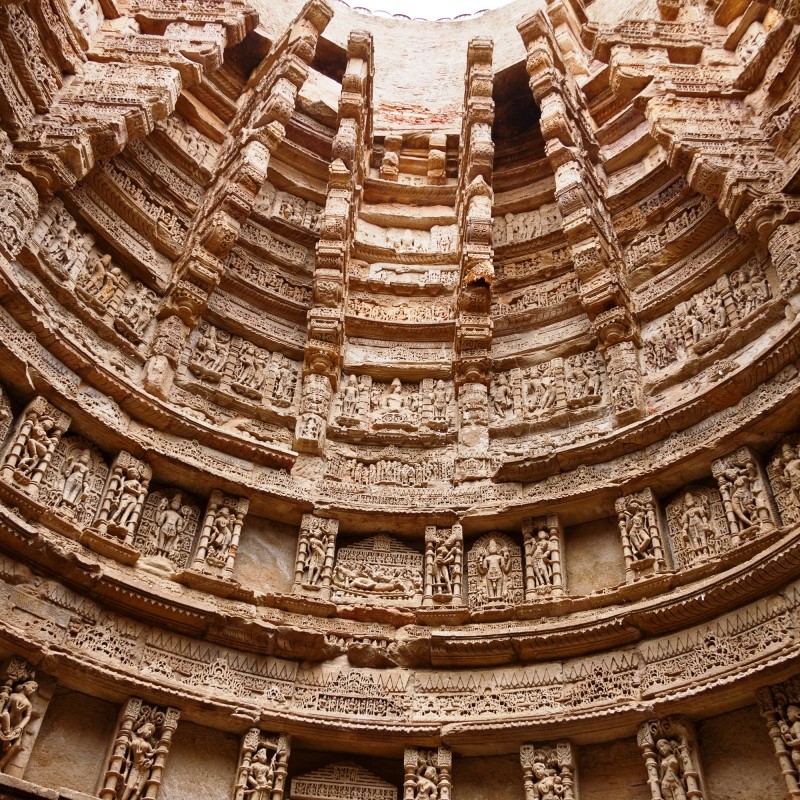
Bai Harir Sultani Stepwell, aka Dada Harir, located within the residential suburban area of Ahmedabad was commissioned in 1485 AD by Bai harir a Royal Nurse in Gujarat sultanate’s court. It is said to have cost 3,29,000 mahmudis (the standard silver coin of the Gujarat sultanate) to refresh men, birds, insects and plants, and at last to please God with its richly-carved walls, a small cupola on each side and, under them, spiral stairs leading down to the water. The well bears two inscriptions, one in Sanskrit on the south and one in Arabic on the north wall, of the first gallery.
As per the Sanskrit inscription engraved on the marble slab, “the general superintendent at the door of the king’s harem and the powerful, religious, chief councillor of king Mahmud”.
Forbes calls the stepwell ‘the nurse’s well’, which corresponds with Blochmnn’s translation of the Arabic inscription, which names the builder as ‘Sri-Bai Harir, the royal (slave) nurse’.
The history behind these stepwells strongly beckons women across the centuries, in an era where historical interpretations have largely neglected women.
Vardhman Envirotech
India’s Passionate rainwater company
This article is published on: –
https://www.thebetterindia.com/297140/women-queens-built-stepwells-india-architecture-history/
We would like to spread this for the benefit of fellow Indians.
(Written by Ardent Geroy; Edited by Yoshita Rao)
Sources:
Rani Ki Vav
